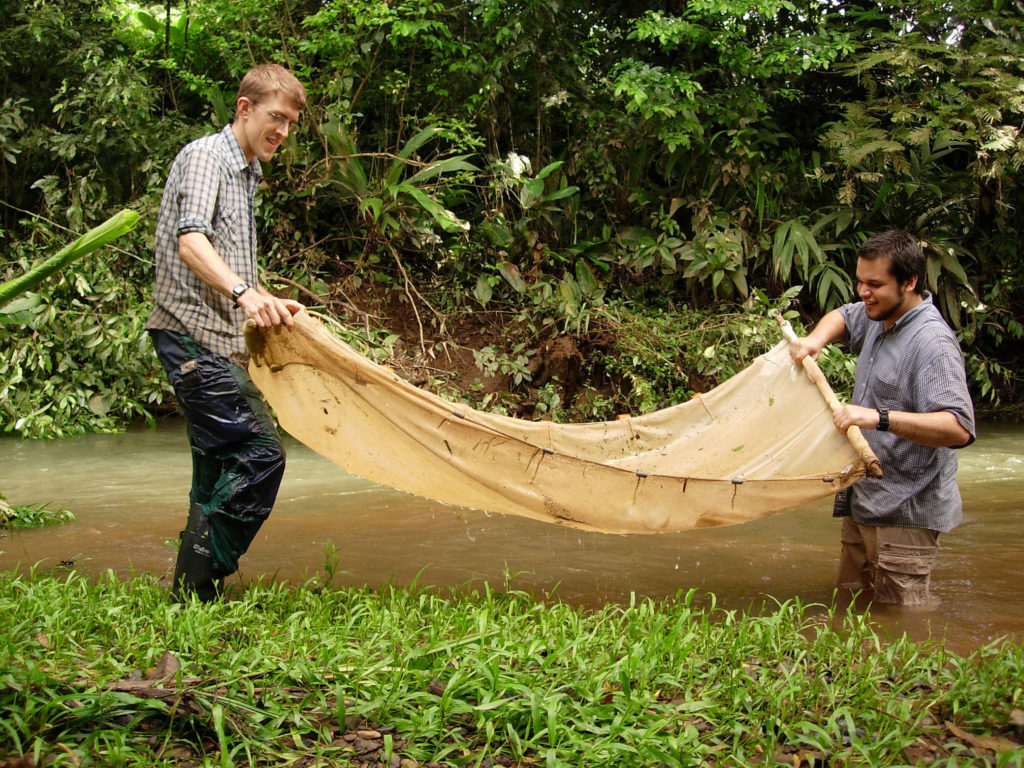Researchers from UGA’s Odum School of Ecology have found that certain neotropical stream ecosystems rely almost entirely on a single fish species known as the banded tetra for the critical nutrient phosphorus.
In a paper recently published in the journal Ecology, the researchers, led by Gaston E. “Chip” Small, explain why this particular species plays such a crucial role-and why these stream systems are vulnerable as a result.
Nutrient recycling is important in freshwater streams that are low in phosphorus and nitrogen, according to Small, who earned his doctoral degree from UGA in 2010 and is now a postdoctoral research associate at the University of Minnesota.
These chemicals provide nutrition for organisms, such as algae, that form the base of the food web. Some streams are naturally high in phosphorus and nitrogen. For streams with low levels, however, fish can provide these elements by excreting the excess nutrients they’ve consumed.
To understand the dynamics of nutrient recycling, Small and his team measured the nitrogen and phosphorus excretion rates of 12 fish species in four streams with varying levels of phosphorus.
The research was carried out at La Selva Biological Station in lowland Costa Rica. Co-author Catherine M. Pringle, Distinguished Research Professor of Ecology, has been conducting research at La Selva with her students for more than 20 years, and has amassed a wealth of data about stream chemistry and food webs there.
The researchers collected and analyzed samples, calculating the weight and amounts of phosphorus and nitrogen in the body of each fish. They also determined the composition of each fish’s diet-the food items as well as the proportion of aquatic to terrestrial sources-by examining digestive tract contents. This was particularly important, according to Small, because there was not a lot of existing data about the dietary component of nutrient recycling.
The researchers then calculated each species’ excretion rates for both nutrients. For nitrogen, they found that excretion rates increase with the proportion of insects in the diet. For phosphorus too, rates depended upon the proportion of insects in the diet, but also on the percentage of phosphorus in the fish’s body and the level of phosphorus in the stream.
The team found that Astyanax aeneus, the Latin name for the banded tetra, had the highest rate of phosphorus excretion among the five most abundant species in the lowest phosphorus stream. It was responsible for 90 percent of the phosphorus recycled by all five species and 90 percent of the phosphorus needed by the stream system, making it the system’s keystone nutrient recycler-a term coined by Small and his colleagues to describe the study’s findings.
A. aeneus is also likely to be an important species in many other similar streams in the tropics and subtropics, according to Small.
“We have to understand what species are doing in ecosystems,” he said. “And there are real threats to them. There is a high potential for invasion by non-native tilapia, which is farmed nearby. Armored catfish also have been sighted in an adjacent stream-while native, they are invading from outside their natural range. Loss of a keystone nutrient recycler could have an enormous impact, as could the invasion of species with a high phosphorus demand. The way the ecosystem functions could change dramatically.”
